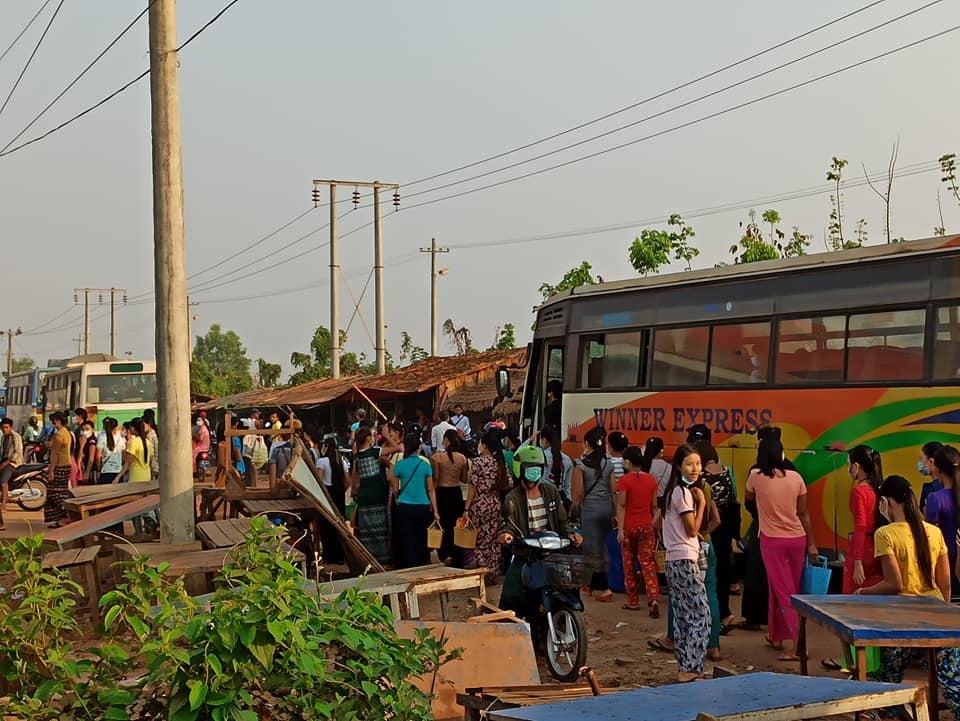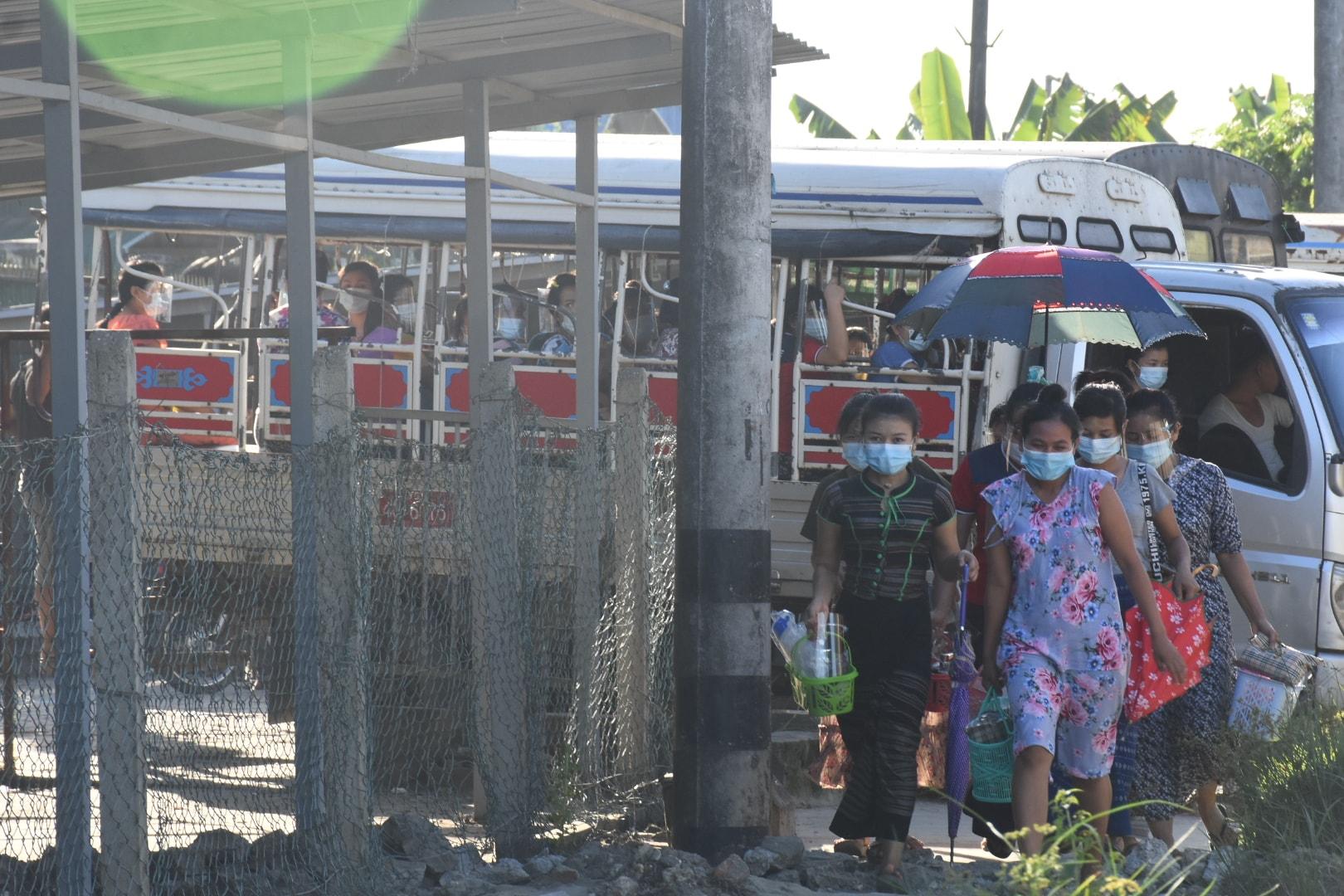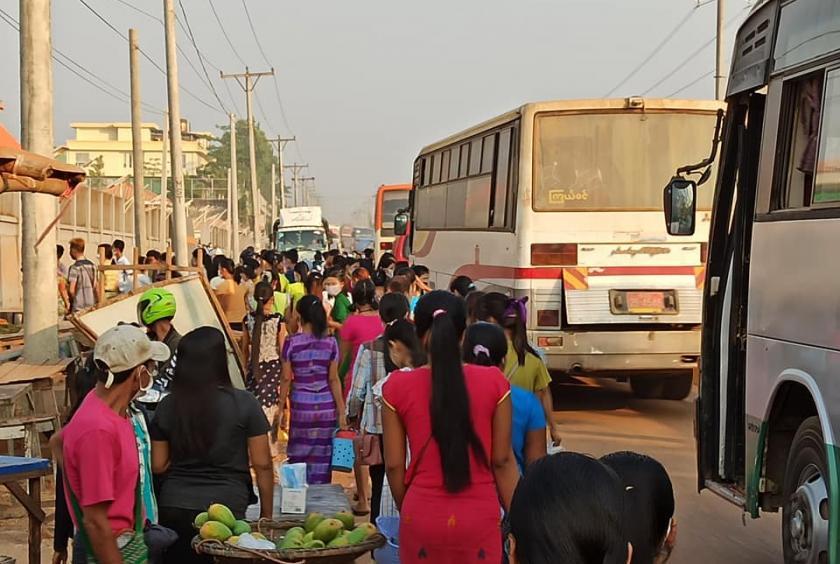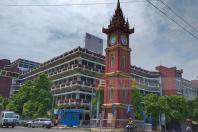The United Nations warned that the fallout of COVID-19 and response to it is not only limited to healthcare but also for the economy.
Myanmar, like so many other countries in the world, was afflicted with COVID-19, crippling businesses across all sectors. Business owners have said that to even continuing to operate will be difficult.
It is certainly a challenge to come up with answers for both short and long term impacts of the pandemic as many companies, factories, workshops and so on had to shutter, some temporarily and some permanently.
And so regulations and guidelines were released and enacted so that businesses may, in safer conditions, resume their operations.

However, the current turmoil and the resurgence of Covid-19 is the double-trouble that could spell doom for Myanmar's economy.
Nikkei's recent PMI, published under IHS Markit, for the manufacturing sector published in April 2021 reports that some businesses have no choice but to continue to keep their doors closed, highlighting a sharp decline in Myanmar's overall manufacturing output.
Asean's manufacturing status
The same PMI says that the Asean bloc's PMI increased notably in April, also stating that it is the highest ever record since July 2014. This also heightened confidence for both businesses and customers, with incremental growth of confidence year up year.
Vietnam scores the highest amongst its member nations, pulling in 54.7 within around two and a half year. It is shadowed by Indonesia at a PMI rate of 54.6, followed by Malaysia at above 50.0 since 2018 of September.
Thailand was also reported to be rising but scored lowered at 50.7. Singapore and Phillippines actually scored lower with Singapore coming in with a lower score of 49.5 since September 2020. Phillippines also scored lower for the first time at 49.0 since October 2020, despite it being a minute drop.
Myanmar was reported to have scored with a steep drop, the highest amongst the aforementioned seven nations with a PMI of 33.0, and despite it being an increase since the last three months, the report says that Myanmar is showing a strong downward trajectory.
IHS Markit's economist Lewis Cooper said that Asean's manufacturing sector is looking strong, showing a strong signs of recovery and a drive toward to recouping losses sustained and growing strong.
Myanmar's manufacturing situation
The report says that manufactured goods, new orders and purchases had declined by five times the speed since December 2015.
While most blame that due to the increase in cost there is a lack of access to raw ingredients and manipulation of the Kyat-Dollar exchange market as pressure on inflation rates, the report says that within three months, most large companies only partially pinned it on buyers.
The report's most telling number is that Myanmar's PMI was at 27.5 but increased to 33.0, showing a backpeddling of the manufacturing sector for eight months straight. The report also says that the output of goods and new orders are down at a five-fold speed while stored goods and workplaces are showing three to four times the downturn speed in April.
Economist Shreeya Patel from IHS Markit says that April's data shows that Myanmar's local operations remain in the minus and that it remains the lowest since the report's inception since five years ago despite the rise in PMI.
He also says that the other worrying sigh is the sudden explosion of pressure on inflation rates and the rise in the value of Kyat against the dollar, on top of other difficulties for trade put many large businesses under immense pressure.
Since factories are also closed due to several reasons including workers going back to their home towns and so on, around 60 percent of large companies in the manufacturing sector saw a decline in output in April compared against March.

Workers heading to their respective factories in Hlaingtharyar Industrial Zone.
Lack of access to raw ingredients, worsening currency exchange situation as well as rise in transportation costs all combined together to raise the inflation rate of imported goods since November 2018.
As businesses cannot simply raise prices to cover for all the extra expenses, cost of goods in April only raised somewhat marginally. Many of them had expected 2022 to be a good year but the report states that the overall situation is the worst it has gotten within at timespan of over 2 years.
Hlaingtharyar Township's labour administrator U Thein Min Tun says thateven though around 80 percent of factories and workshops reopened, there were complaints to proceed according to labour laws when the places that reopened did not recieve any new orders and thus decided to shut down operations temporarily.
"There have bene some complaints because factories had to close again because they recieve no orders. Around 80 percent of factories in Hlaingtharyar are open now," said U Thein Min Tun.
An in-charge from the Shwe Lin Ban Industrial Zone Committee says that despite the reopening of around 60 percent of factories, a lot of workers went back to their home towns and thus aren't able to operate fully.
"Around 60 percent have resumed operations but only about 40 percent of workers are here. The situation overall is good. There have so far been no problems except for one or two factories that did not give salaries. The factory that burned down even gave us a schedule to pay off any outstanding salaries that have yet to be paid," said Shwe Lin Ban Industrial Zone Committee member U Aung Ngwe.
A local economist says that despite all the signs of recovery, primary investors do not have confidence in businesses amidst the turmoil, thus many large businesses have decided to close up shop or suspend their operations indefinitely, which means that it is not easy even to give an estimate when Myanmar's economy will show signs of life.











